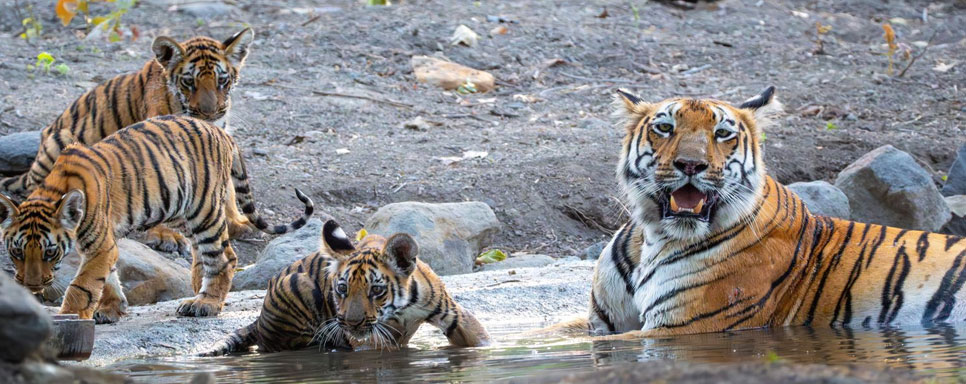How is the Wildlife Sighting in Tipeshwar Wildlife Sanctuary?

Tipeshwar Wildlife Sanctuary, located in the Yavatmal district of Maharashtra, is an emerging destination for wildlife enthusiasts seeking thrilling encounters with nature. Known for its serene landscapes, dry deciduous forests, and presence of big cats, Tipeshwar has gradually found a place on the map of serious safari-goers in India. While it may not be as commercialised or well-known as some of the larger national parks, Tipeshwar is gaining popularity among wildlife enthusiasts who seek a more intimate and unfiltered wildlife experience. Especially for tiger lovers and nature photographers, this sanctuary offers a good mix of biodiversity and solitude.
In this blog, we take a closer look at how good the wildlife sightings in Tipeshwar really are. From frequently spotted species to the role of luck and expert guides, and what you can expect on a typical safari, here’s everything you need to know before making your Tipeshwar safari booking. Tipeshwar is home to a variety of wildlife species, many of which are frequently sighted during safaris. Commonly seen animals include tigers, leopards, sloth bears, wild boars, nilgai, sambar, chital, barking deer, jackals, and langurs. The sanctuary also supports several species of reptiles and a rich variety of birds, making it an excellent destination for birdwatching, especially in the winter months.
How Frequent Are Wildlife Sightings in Tipeshwar?
Wildlife sightings in Tipeshwar can be quite rewarding, especially if you are visiting during the right season and in the right zones. Tiger sightings, in particular, have shown a promising trend over the last few years, thanks to increased monitoring and conservation efforts. Many visitors have reported multiple sightings over the course of just two or three safaris.
Compared to some of the larger and more famous tiger reserves, Tipeshwar offers a quieter and less crowded experience. This peaceful environment increases your chances of meaningful wildlife encounters. When compared to other lesser-known sanctuaries, Tipeshwar stands out for its high visibility of big cats and a dense variety of prey species in concentrated zones.
Factors Affecting Wildlife Sightings in Tipeshwar
• Season:
The season greatly impacts wildlife sightings in Tipeshwar. Summer (March to June) offers the best chances, especially for tiger sightings, as animals gather near waterholes in the dry forest. Winter (October to February) is comfortable and ideal for birdwatching, though dense vegetation may limit visibility. The sanctuary remains closed during the monsoon (July to September) due to heavy rains, allowing the forest to rejuvenate while ensuring safety and conservation.
• Luck:
Even in prime conditions, wildlife sightings depend significantly on luck. Some tourists might spot a tiger within the first 10 minutes of their safari, while others may complete multiple rides without any major sightings. The unpredictability of nature is part of what makes the experience so thrilling. Tipeshwar does offer good chances, but no sighting is ever guaranteed.
• Guides:
Having an experienced guide or naturalist by your side can drastically improve your safari experience. These guides are well-versed in the sanctuary's terrain and animal movement patterns. They can identify alarm calls, fresh pugmarks, and subtle changes in the jungle that might indicate the presence of big cats.
Safaris in Tipeshwar are conducted in open 6-seater jeeps, allowing an immersive jungle experience. Each safari lasts around 3 to 4 hours, and most visitors prefer to do at least 2 to 3 safaris for a better chance at wildlife sightings. It’s important to stay quiet, patient, and alert throughout the drive. If you're wondering whether Tipeshwar is worth a visit for tiger sightings, the answer largely depends on your travel expectations. For nature lovers, photographers, and travelers looking to escape the crowds, Tipeshwar is a hidden gem. The sightings might not be guaranteed, but the thrill of the unknown, the dense forest, and the intimate safari setups make it a destination worth exploring.